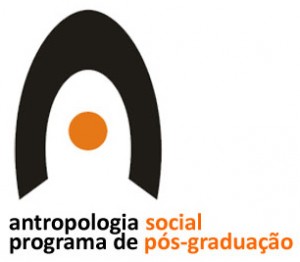Corpos, espíritos e história:
perspectivas indo-caribenhas
DOI:
https://doi.org/10.14244/rau.v15i2.454Palavras-chave:
espíritos, história, corpo, Guiana, culto à KaliResumo
Este texto se debruça sobre formas de conhecimento histórico mediadas pela presença de espíritos de colonizadores na vida cotidiana e ritual de residentes da região costeira da Guiana, antiga Guiana Britânica. Por meio da descrição de diversas ordens de relações entre membros de uma vertente hindu heterodoxa – o culto à deusa Kali, divindades hindus e espíritos –, demonstro que espíritos de colonizadores têm o potencial de desestabilizar e transformar os corpos de humanos continuamente, precisamente por conta de seus atributos, constituídos de forma violenta no passado. Apresento, ainda, distintas possibilidades de historicizar o culto à Kali, na medida em que concebo o corpo como instância fundamental de incorporação da história e lócus de transformações. Por fim, abordo o conceito de forma, que aponta para a construção relacional de divindades, espíritos e pessoas humanas.
Referências
Asad, Talal (1993). Genealogies of religion. Discipline, and reasons of power in Christianity and Islam. Baltimore: The John Hopkins University Press.
Bahadur, Gaiutra (2013). Coolie woman. The odyssey of indenture. Chicago: The University of Chicago Press.
Bassier, Dennis (1977). Kali Mai Worship in Guyana: an overview. Georgetown: University of Guyana.
Blanes, Ruy & Espírito Santo, Diana (2013). Introduction. In R. Blanes & D. Espírito Santo (eds.), The Social Life of Spirits (pp. 1-31). Chicago: The University of Chicago Press.
Bulamah, Rodrigo (2023). Ruínas circulares: uma antropologia da história no norte do Haiti. Rio de Janeiro: Papéis Selvagens.
Brubaker, Richard L. (1978). The ambivalent mistress: a study of South Indian village goddesses and their religious meaning. Ph.D. Dissertation, Faculty of the Divinity School, University of Chicago.
Cunha, Olívia Maria G. (2018). Introduction: exploring Maroon worlds in the move. In O. M. G. da Cunha (ed.). Maroon cosmopolitics: Personhood, creativity, and incorporation (pp. 1-32). Leiden: Brill.
Daniel, Valentine (1984). Fluid sings: Being a person in the Tamil way. Princeton: Princeton University Press.
Dumont, Louis (1957). Une sous-caste de l'Inde du Sud : Organisation sociale et religion des Pramalai Kallar. Paris: Mouton.
Eck, Diana L. (1981). Darsan: seeing the divine image in India. New York: Columbia University Press.
Forde, Maarit & Hume, Yanique. (eds.) (2018). Passages and afterworlds: anthropological perspectives on death in the Caribbean. Durham: Duke University Press.
George, Stephanie Lou (2018). Invoking the supernatural and the supranational: Tappu, trance and Tamil recordings in Indo-Guyanese ‘Madras Religion’ and the politics of sonic presence. Civilizatio ns. Revue internationale d’anthropologie et de sciences humaines, 67, pp. 41-56.
Guinee, William (1992). Suffering and healing in Trinidadian Kali worship. PhD Dissertation. Bloomington: Indiana University.
Goslinga, Cornelis Ch. (1985). The Dutch in the Caribbean and in the Guianas, 1680-1791. Dover: Van Gorcum.
Halstead, Narmala (2005). Belonging and respect notions vis-à-vis modern East Indians: Hindi movies in the Guyanese East Indian diaspora. In R. Kaur & A. Sinha (eds.), Bollyworld: popular. Indian cinema through a transnational lens (pp. 261-283). New Delhi: Sage Publications.
Hoonhout, Bram (2020). Borderless empire: Dutch Guiana in the Atlantic world, 1750-1800. Athens: The University of Georgia Press.
Jayawardena, Chandra (1966). Religious belief and social change: aspects of the development of Hinduism in British Guiana. Comparative Studies in Society and History, 8, pp. 211-240.
Kars, Marjoleine (2020). Blood on the river: a chronicle of mutiny and freedom on the Wild Coast. New York: The New Press.
Khan, Aisha (2004). Calallo nation: metaphors of race and religious identity among South Asians in Trinidad. Durham: Duke University Press.
_____ (2018). Life and postlife in Caribbean religious traditions. In M. Forde & Y. Hume (eds.). Passages and afterworlds. Anthropological perspectives on death in the Caribbean (pp. 243-260). Durham: Duke University Press.
Kloß, Sinah (2016a). Fabric of Indianness: the exchange and consumption of clothing in transnational Guyanese Hindu communities. Nova York: Palgrave McMillan.
_____ (2016b). Manifesting Kali’s power: Guyanese Hinduism and the revitalization of the ‘Madras tradition’. Journal of Eastern Caribbean Studies 41(1), pp. 83-110.
Kwon, Heonik (2008). Ghosts of War in Vietnam. Cambridge: Cambridge University Press.
Look Lai, Walter (1993). Indentured Labor, Caribbean Sugar: Chinese and Indian Migrants to the British West Indies, 1838–1918. Baltimore: John Hopkins University Press.
Marriott, McKim (1976a). Hindu transactions: diversity without dualism. In B. Kapferer (ed.), Transaction and meaning: directions in the anthropology of exchanging and symbolic behavior. Philadelphia: Institute for the Study of Human Issues, 1976.
_____ (1976b). Interpreting Indian society: a monistic alternative to Dumont’s dualism. Journal of Asian Studies, xxxvi (1), pp. 189-195.
McNeal, Keith (2011). Pantheons as mythistorical archives: pantheonization and remodeled iconographies in two Southern Caribbean possession religions. In A. Apter & L. Derby (eds.), Activating the Past: History and Memory in the Black Atlantic (pp 185-244). Cambridge: Cambridge Scholars Press.
McNeal, Keith; Mahabir, Kumar & Younger, Paul (2013). Hindu healing traditions in the Southern Caribbean: history and praxis. In P. Sutherland; R. Noodley & B. Chevannes (ed.), Caribbean healing traditions: implications for health and mental health (pp. 176-187). London: Routledge.
Mello, Marcelo Moura (2014). Devoções manifestas: religião, pureza e cura em um templo hindu da deusa Kali (Berbice, Guiana). Tese de Doutorado, PPGAS/Museu Nacional, Universidade Federal do Rio de Janeiro, Rio de Janeiro, RJ, Brasil.
_____ (2018a). Murtis em movimento: relações entre pessoas, coisas e divindades em um templo hindu na Guiana. Mana – Estudos de Antropologia Social, 24(1), pp. 103-133.
_____ (2018b). Leituras sobre o hinduísmo caribenho: etnografia e história. Cultures-Kairós, 8, pp. 1-12.
_____ (2020a). Mimesis, dúvida e poder: divindades hindus e espíritos de colonizadores na Guian”. Horizontes Antropológicos, 26, pp. 57-86.
_____ (2020b). Materiality, affection, and personhood: on sacrifice in the worship of the goddess Kali in Guyana. Vibrant, 71, pp. 1-20.
_____ (2021). Espíritos, história e colonialismo na Guiana. Revista de Antropologia, 64(2), pp. 1-21.
_____ (2022a). Dançando com os karagam: corpo, materialidade e possessão espiritual em uma tradição hindu na Guiana. In O. Cunha & C. Gomes de Castro (eds.), Espírito das coisas: etnografias da materialidade e da transformação (pp. 53-79). Rio de Janeiro: Ed. UFRJ.
_____ (2022b). Dutch spirits, East Indians, and Hindu deities in Guyana: contests over land. American Anthropologist, 124(2), pp. 370-382.
_____ (2023).
Mentore, George (2018). Of vital spirits and precarious bodies in Amerindian socialities. In M. Forde & Y. Hume (ed.), Passages and afterworlds. Anthropological perspectives on death in the Caribbean (pp. 54-79). Durham: Duke University Press.
Munasinghe, Viranjini (2001). Callaloo or tossed salad? East Indians and the cultural politics of identity in Trinidad. Ithaca: Cornell University Press.
Palmié, Stephan (2013). Historicist knowledge and its conditions of impossibility. In R. Blanes & D. Espírito Santo (eds.). The social life of spirits (pp. 218-239). Chicago: The University of Chicago Press.
_____ (2022). Caribbeanist Anthropology and Minerva’s owl: lessons forgotten, lessons learned. Journal of Latin America and Caribbean Anthropology 27(3), pp. 289-308.
Palmié, Stephan & Stewart, Charles (2016). Introduction: for an anthropology of history. Hau – Journal of Ethnographic Theory, 6(1), pp. 206-227.
_____ (2019). Introduction: the varieties of historical experience. In S. Palmié & C. Stewart (eds.). The varieties of historical experience (pp. 1-29). London: Routledge.
Pires, Rogério Brittes W. (2017). Futuros que seguem: multiplicidade espaço temporal Businenge no Suriname pós-colonial. Ilha – Revista de Antropologia, 19(2), pp. 143-174.
Rodney, Walter (ed.) (1979). Guyanese sugar plantations in the late nineteenth century. A contemporary description from the Argossy. Georgetown: Release Publishers.
_____ (1981a). A history of the Guyanese working-class people, 1881-1905. Baltimore: John Hopkins University Press.
_____ (1981b). Plantation society in Guyana. Review (Fernand Braudel Center), 4(4), pp. 643-666.
Scott, David (2004). Conscripts of modernity: the tragedy of colonial enlightenment. Durham: Duke University Press.
_____ (2018 [1991]). Aquele evento, esta memória: notas sobre a antropologia das diásporas africanas no Novo Mundo. Ilha – Revista de Antropologia, 19(2), pp. 277-312.
Singh, Karna (1978). Kali Mai Puja: a study of a Guyanese East Indian folk cult in its sociocultural context. Georgetown: University of Guyana.
Shaw, Rosalind (2002). Memories of the Slave Trade: Ritual and the Historical Imagination in Sierra Leone. Chicago: The University of Chicago Press.
Smith, Raymond (1959). Some social characteristics of Indian immigrants to British Guiana. Population Studies, 13, pp. 34-39.
_____ (1995). In the gun mouth’: race, class, and political violence in Guyana. New West Indian Guide, 69(3-4), pp. 223-252.
Stephanides, Stephanos & Singer, Karna (2000). Translating Kali's feast: the goddess in Indo-Caribbean ritual and fiction. Amsterdam: Rodopi.
Stewart, Charles (2016). Historicity and anthropology. Annual Review of Anthropology 45, pp. 79-94.
_____ (2017). Dreaming and historical consciousness in Island Greece. Chicago: The University of Chicago Press.
Stoller, Paul (1995). Embodying Colonial Memories: Spirit Possession, Power, and the Hauka in West Africa. London: Routledge.
Strange, Stuart (2021). Suspect others: spirit mediums, self-knowledge, and race in multiethnic Suriname. Toronto: Toronto University Press.
Trotz, Alissa (2004). Between despair and hope: women and violence in contemporary Guyana. Small Axe, 15, pp. 1-20.
Trouillot, Michel-Rolph (2002). North Atlantic universals: analytical fictions, 1492-1945. Southern Atlantic Quarterly, 101(4), pp. 839-858.
_____ (2016 [1995]). Silenciando o passado: poder e a produção da história. Curitiba: Huya.
_____ (2018 [1992]). A região do Caribe: uma fronteira aberta na antropologia. Afro-Ásia, 58, pp. 189-232.
Vaughn, Sarah (2022). Engineering vulnerability. In pursuit of climate adaptation. Durham: Duke University Press.
Vertovec, Steven (1991). East Indians and anthropologists: a critical review. Social and Economic Studies, 40(1), pp. 133-169.
_____ (1994). Official’ and ‘popular’ Hinduism in the Caribbean: historical and contemporary trends in Surinam, Trinidad, and Guyana. Contributions to Indian Sociology, 28(1), pp. 123-147.
Williams, Brackette (1991). Stains on My Name, War in My Veins: Guyana and the Politics of Cultural Struggle. Durham: Duke University Press.
_____ (2018 [1990]). Fantasmas holandeses e o mistério da história: ritual e interpretações de colonizadores e colonizados sobre a rebelião de escravos em Berbice. Ilha – Revista de Antropologia, 22(1), pp. 187-223.
Wirtz, Kristina (2022). Voices in a sea of history: why study language in the Caribbean. Journal of Latin America and Caribbean Anthropology, 27(3), pp. 255-288.
Younger, Paul (2002). Dance and trance in a New World: a Mariyamman festival in Guyana. In P. Younger, Playing host to the deity: estival religion in the South Indian tradition (pp. 133-143). Oxford: Oxford University Press.
Downloads
Publicado
Como Citar
Edição
Seção
Licença
Copyright (c) 2024 Revista de Antropologia da UFSCar

Este trabalho está licenciado sob uma licença Creative Commons Attribution-ShareAlike 4.0 International License.





